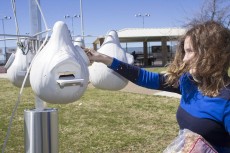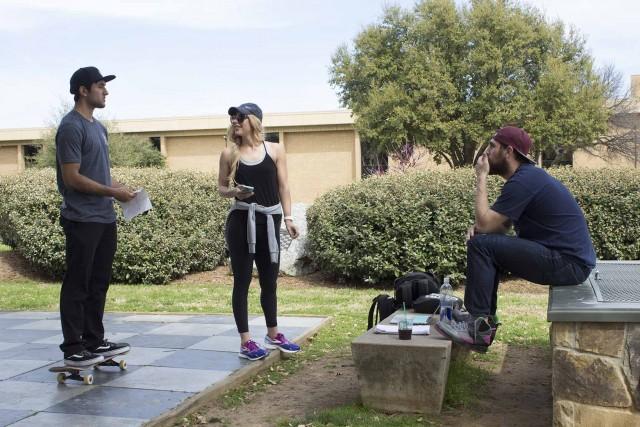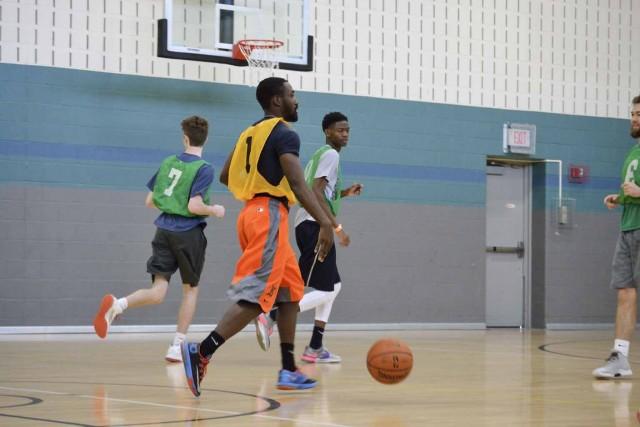By Gerrit Goodwin/ campus news editor

Bogdan Sierra Miranda/The Collegian
Attention all ornithological observers, the bird is the word on NE Campus with the expected arrival of purple martins, the largest North American swallow, this spring.
Purple martins are migratory songbirds in the swallow family that travel up to 10,000 miles each year. In spring, the martins return from South America to spend the summer months in North America breeding.
NE health associate professor Tim Sebesta is a self-proclaimed bird enthusiast and has made it his mission to ensure safe housing for the returning martins.
Sebesta said while he maintains the habitat, it was NE sciences and technology dean Charlene Cole who gave the project by the tennis courts approval and funding.
The installation, which looks something like a stadium lamppost, operates like a flagpole. The plastic gourd bird homes that surround the pole can be raised and lowered for maintenance.
“We lowered the gourds and started layering the insides with pine straw and cedar bedding,” he said. “Before that, we had to taper the entrance to make sure other birds don’t begin nesting before the martins arrive.”
Sebesta said he was attempting to recreate an experience he had at a previous job, where he had helped to maintain 24 gourds, all full of purple martins.
Challenges come with protecting any population of purple martins such as when extreme weather or even other birds threaten them, he said.
However, NE student Caroline Clement was enlisted to help monitor and maintain the new housing with Sebesta.
“I always liked animals,” she said. “Earlier in the year, there were birds trying to nest outside of my window at home, and when I heard about this opportunity, I thought it would be a great way to see how they live.”
Clement said she one day hopes to get a position at the Fort Worth Zoo, and this will reflect positively on her resume.
The purple martins, which are protected by state and federal laws, become territorial if their habitat is approached and have been known to dive-bomb pedestrians, so it is advised that students maintain a safe distance and only observe the swallows.


























